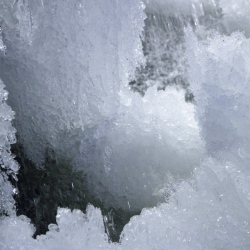
Just like the moon and Mercury, the largest asteroid in Earth’s solar system, Ceres, has cold pockets of perpetual darkness on its surface where researchers have now detected ice, a new study finds. It remains a mystery, however, why only small amounts of ice were detected in these shadowy crater floors.
With a diameter of about 585 miles (940 kilometers), Ceres is referred to as both an asteroid and a dwarf planet. It is the dwarf planet closest to Earth and the largest member of the solar system’s main asteroid belt, located between Mars and Jupiter.
Water is not entirely uncommon on Ceres, previous observations revealed plumes of water vapor erupting from Ceres, exposed water ice has been seen at mid-latitudes (although only in a rare instances), and the dwarf planet’s surface material is a mixture of rock and ice; additional research has suggested that Ceres possesses a substantial amount of ice under its surface.
Like the moon and Mercury, the axis on which Ceres spins is tilted only a few degrees with respect to the path it follows around the sun. This means Ceres’ poles are only ever slightly angled toward the sun. (In comparison, Earth has an axial tilt, or obliquity, of about 23.4 degrees, which explains why the planet experiences seasons, long summer days occur in the hemisphere tilted toward the sun, and long winter nights happen in the hemisphere tilted away from the sun.)
The modest axial tilt of the moon and Mercury means that craters at their poles have spots on their floors where the sun never shines. These permanently shadowed regions serve as "cold traps" where water ice can survive. In areas where the sun shines directly on the surface, water ice is warmed up and sublimates (turns directly into a gas).
Prior work suggested that Ceres might possess cold traps like those of the moon and Mercury. Now researchers for the first time have images of ice trapped within permanently shadowed regions on Ceres.
